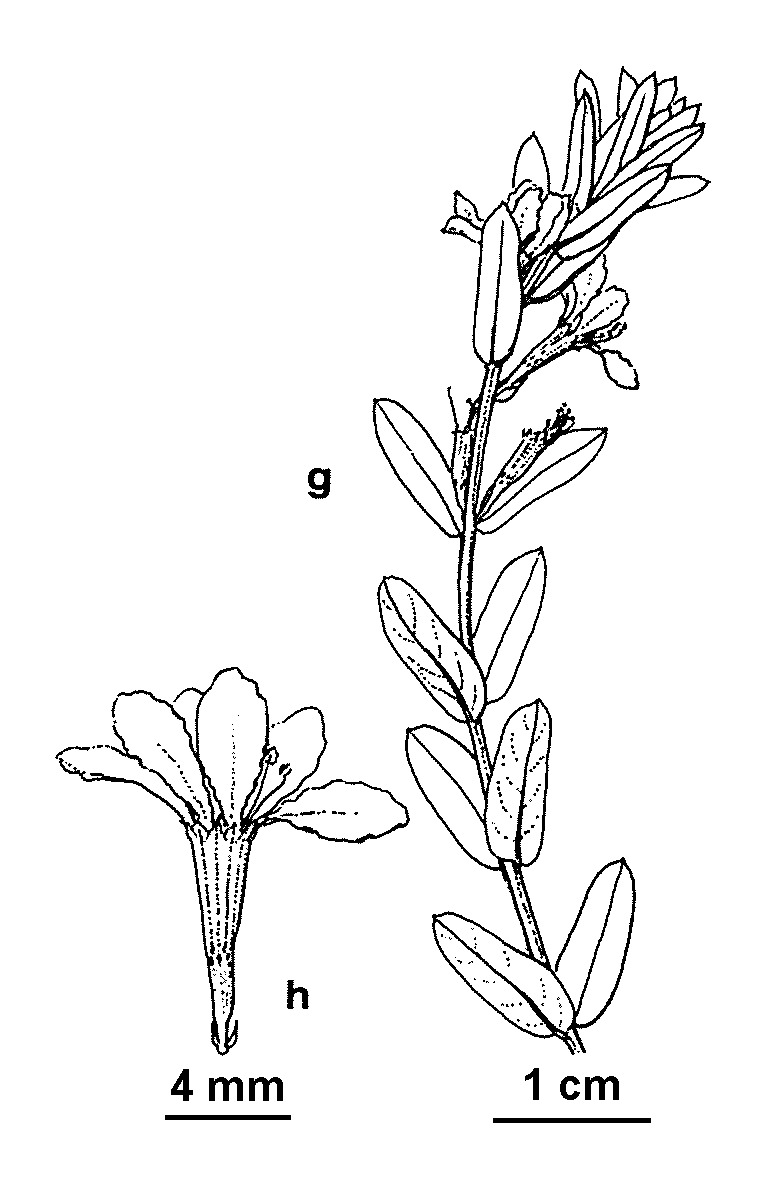Lythrum junceum
Banks & Sol. Mediterranean LoosestrifePerennial herb, decumbent to ascending, to 50 cm tall, glabrous; stems stoloniferous, to 1 m long. Leaves mostly alternate, linear, oblong or elliptic, 0.7–3 cm long, to 10 mm wide, sessile or subsessile; apex acute to obtuse; base rounded to slightly auriculate. Flowers solitary in upper leaf axils, pedicel 1–2 mm long; hypanthium narrow-obconical, 4.5–7 mm long, c. 1.5 mm diam., with a ring of reddish spots near base; appendages 5 or 6, triangular, 0.5–1 mm long; sepals 5 or 6, triangular, 0.5–1 mm long; petals 5 or 6, spreading, obovate, 4–6 mm long, pink to purple; stamens usually 10–12, dimorphic, 5 or 6 exserted by 1–2 mm. Capsule ovoid, shorter than hypanthium, dehiscing by 2–4 valves. Flowers mainly Oct.–Apr.
MuM, GleP, Brid, VVP, GipP, OtP, WaP, Gold, DunT, NIS, WPro, HSF, OtR. Also naturalised SA. Native to the Mediterranean area and south-west Europe. Scattered across southern Victoria west from Wilsons Promontory, usually in damp situations.
Jeanes, J.A. (1996). Lythraceae. In: Walsh, N.G.; Entwisle, T.J., Flora of Victoria Vol. 3, Dicotyledons Winteraceae to Myrtaceae, pp. 909–911. Inkata Press, Melbourne.
 Spinning
Spinning


